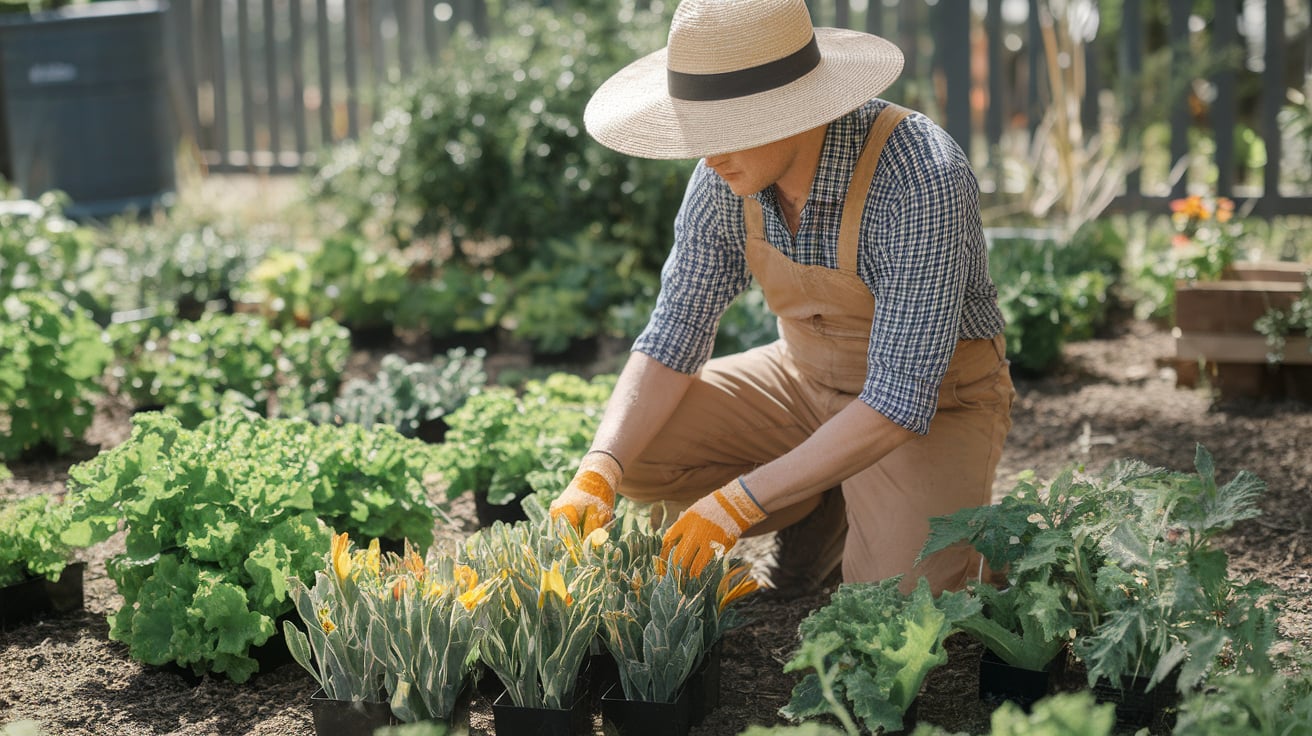Growing food without access to city utilities feels hard. Many people think it needs special skills, fancy tools, or lots of space. I’ve seen plenty of folks give up before they even start because they think it’s too tough.
But off-grid gardening is much simpler than you might believe. With some basic methods and a bit of planning, you can grow fresh food anywhere—without depending on public water or power systems.
I’ll show you the key steps to start your off-grid garden. You’ll learn about water collection systems, soil methods that work in any climate, and how to pick plants that thrive with minimal care.
Plus, I’ll share real tips from people who grow all their food without city hookups.
Why You Should Consider Off-Grid Gardening?
People turn to off-grid gardening for good reasons. Many want to live more sustainably, others hope to avoid store-bought food, and some plan for times when stores might close.
The main draw is being able to take care of yourself. When you grow your own food, you don’t need to rely on others as much. This feels good day to day, and it helps even more when problems hit.
Off-grid gardens let you control what goes into your food—no need to worry about what might be on store veggies. You know exactly how your plants grew.
Money matters, too. Store prices keep going up. A home garden cuts food costs a lot. Plus, fresh-picked food tastes better!
Proven Techniques for Effective Off-Grid Gardening
1. Composting: Natural Fertilization
Kitchen scraps and yard waste become free plant food. You need both green items (vegetable peels, coffee grounds) and brown items (dry leaves, paper). Turn the pile every few weeks. Good compost smells earthy, not bad.
Keys to success:
- Keep pile as damp as a wrung-out sponge
- Mix greens and browns in equal amounts
- Make sure air can reach the center
- Let it heat up to kill weed seeds
2. Water Harvesting: Rainwater Collection
Rain offers free water for your garden. Simple systems catch water from your roof. One inch of rain on a 1,000 square foot roof yields 623 gallons! Store water in tanks or barrels for dry times.
The basic setup includes:
- Gutters that direct water flow
- First-flush diverters to remove roof dirt
- Storage tanks with secure lids
- Overflow pipes for heavy rains
- Spigots for easy access
3. Soil Health: Building Better Ground
Good soil grows better plants with less work. Add organic matter each season. Cover bare soil with mulch. Test pH levels yearly and adjust as needed. Worms show your soil is alive and well.
Soil improvement methods:
- Layer compost on top yearly
- Plant cover crops in empty spaces
- Use mulch to protect the soil surface
- Add rock dust for minerals
- Introduce worms to speed breakdown
4. No-Till Gardening: Preserving Structure
Digging damages soil life and structure. No-till methods work with nature instead. Add new materials on top, let soil creatures mix them in. Plants grow stronger in undisturbed soil with more helpful fungi.
No-till advantages:
- Saves time and back strain
- Keeps carbon stored in soil
- Maintains soil moisture better
- Reduces weed problems over time
- Protects helpful soil organisms
What You Need to Know for Off-Grid Gardening Success
1. Location & Site Selection
Choosing the right location is key to a successful off-grid garden. Observe your land through different seasons to spot the warm and cold areas. South-facing spots get more sunlight, which is ideal for plant growth.
Look for natural water flow after rain, as it can help you make the most of water resources. Pay attention to wind patterns that can dry out soil and harm plants. It’s also smart to have your garden close to your living space for easier care.
Test the soil in different areas, as it can vary even in small yards.
2. Climate Adaptation
Your garden should adapt to the local climate. In dry regions, choose drought-tolerant plants and use mulching to retain moisture. Sunken beds can help capture and hold rainwater.
Row covers, cold frames, or high tunnels that extend the growing season benefit cold climates. In hot areas, provide afternoon shade and select heat-resistant plants. Native plants are often easier to manage since they are already adapted to the climate.
3. Tools & Materials
Without power tools, hand tools are essential for off-grid gardening. Invest in quality tools, like a good shovel, hoe, and pruners. A rain barrel system is one of the most helpful additions for collecting water.
For soil preparation, a broad fork helps loosen the soil without disturbing its structure. A wheelbarrow is useful for moving materials without using fuel. Store seeds in cool, dry places, and use hand-cranked seeders for faster planting.
Gravity-fed drip irrigation systems are simple but effective for watering. Keep a garden journal to track what works and what doesn’t.
4. Challenges
Water is a major challenge for off-grid gardens, so it’s important to have backup sources like rain collection or ponds. Without store-bought pesticides, pest control will require more hands-on attention.
Learn to recognize beneficial insects that help control pests. Weather can be more unpredictable, so have plans for droughts or floods. Protecting soil from erosion is crucial to maintaining garden health.
Don’t forget to learn food preservation methods to store what you grow. Finally, connect with others who garden off-grid to share tips and experiences.
Advanced Off-Grid Gardening Techniques
- Permaculture Principles: Natural patterns guide garden design, with plant groups that help each other grow while requiring less work from you.
- Biodynamics: This method follows the moon phases and uses special plant brews to feed soil and boost growth without outside inputs.
- Vermicomposting – Red worms turn kitchen scraps into rich, black soil that plants love—works year-round in small spaces.
- Seasonal Planning- Simple covers like mini greenhouses let you start earlier and finish later, giving more food from the same space.
Avoid These Mistakes in Your Off-Grid Garden
| Mistake | Description | How to Avoid |
|---|---|---|
| Overwatering & Poor Soil Management | Overwatering harms plants. Poor soil can lack nutrients. | Water carefully. Use compost and mulch to improve soil. |
| Planting Too Much at Once | Too many plants can use up resources quickly. | Start small. Expand as you get more experience. |
| Ignoring Pests | Pests damage crops. Chemicals can harm the environment. | Use natural pest control and companion planting. |
Conclusion
Growing food without city hookups puts real power in your hands. You’ve now seen the basic methods that make off-grid gardening work anywhere.
The skills shared here do more than grow food. They build true freedom in your life. When you collect your water, make your soil, and save your seeds, you step away from systems that might fail.
What matters most is starting small and learning as you go. Even a few containers on a patio can teach valuable lessons about growing without city water.
Why not try one technique this week? Set up a rain barrel, start a compost pile, or plant something that needs little water. Each small step builds toward a life where you control more of your food future.
Frequently Asked Questions
1. How Much Space Do I Need for Off-Grid Gardening?
A: You can start with just a few pots on a sunny balcony or go as big as several acres.
2. What Crops Work Best for Beginners in Off-Grid Gardens?
Greens like kale, root crops such as radishes, and herbs need less water and care than most plants.
3. How Do I Garden Off-Grid in Winter Months?
Use cold frames, grow indoor sprouts, or focus on planning and soil-building during cold months.
4. Can I Really Grow Enough Food to Feed My Family?
Yes, with good planning and about 1/4 acre of well-managed space, you can grow most of your food needs.












